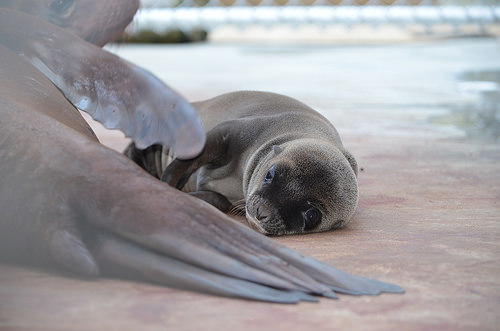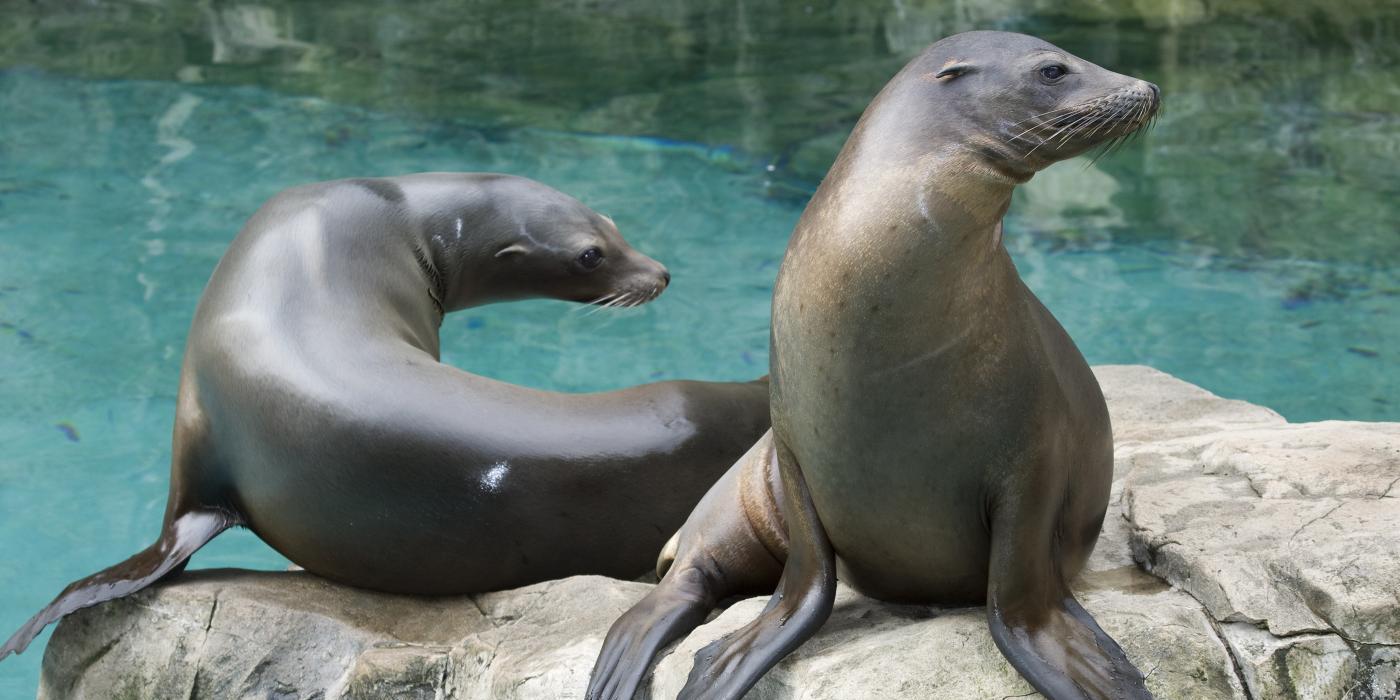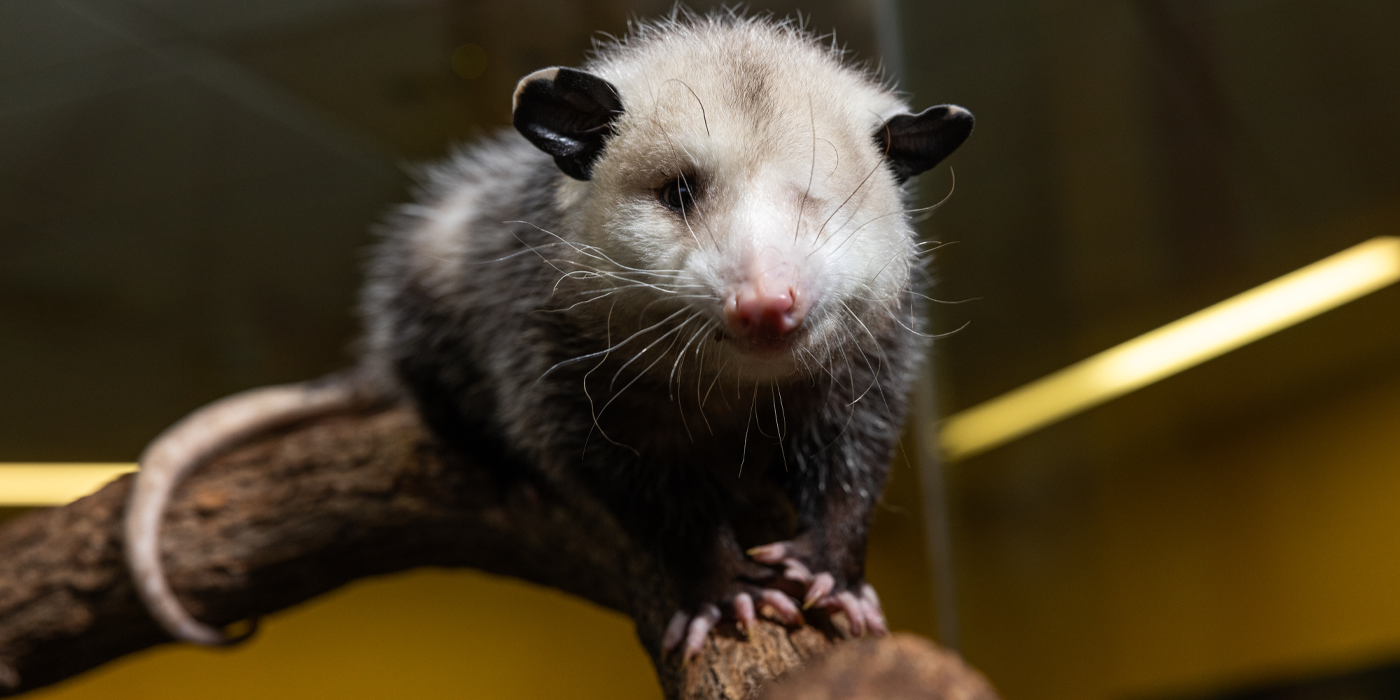Sea Lion Pup Born at the National Zoo
For the first time in 32 years, the Smithsonian's National Zoo's American Trail team celebrated the arrival of a sea lion pup, born June 26 to 11-year-old mother Calli. Keepers watched the birth in an off-exhibit area and continue to closely monitor the pup, which appears to be nursing, moving and vocalizing well. Animal care staff are allowing Calli and pup time to bond, so it may be some time before keepers can determine the pup's sex. This pup is the second for Calli and the first for 8-year-old father, Jetty.
Animal care staff are cautiously optimistic that the pup will thrive and are allowing Calli to care for her pup without interference. Both will remain off-exhibit until Calli's behavior indicates that she is ready to introduce the pup to the other members of the colony. The Zoo's three adult sea lions--Jetty and two unrelated females named Summer and Sidney--are able to see, smell and interact with mom and pup in an adjacent holding area. Once Calli demonstrates that she is ready to introduce the pup to the colony, they will join Summer and Sidney on exhibit later this summer. Jetty will meet the pup last; in the wild, males are typically absent from the beaches following pupping and breeding season.
Keepers suspected that Calli was pregnant based on her physical changes, appetite and weight gain, among other cues. Keepers have trained the sea lions to voluntarily participate in radiographs and ultrasounds with veterinarians present as part of their routine medical care. An April 20 radiograph confirmed Calli was pregnant, and animal care staff have been conducting intermittent ultrasounds and tracking the pup's development. The Zoo announced Calli's pregnancy May 31 through a broadcast via Facebook Live of her ultrasound; it will continue to provide updates on the sea lions through Facebook, Twitter and Instagram.
The Zoo received a recommendation to breed Calli and Jetty from the Association of Zoos and Aquariums' Species Survival Plan (SSP). An SSP matches individual animals across the country for breeding in order to maintain a healthy, genetically diverse and self-sustaining population. Zoo visitors can see Jetty, Summer and Sidney daily at American Trail.
Native to the West Coast of North America, California sea lions range from Baja, Mexico, to Vancouver Island, British Columbia. Though they were once hunted for their skin, the International Union for Conservation of Nature now classifies them as a species of least concern.
# # #
Photo: Jacqueline Conrad, Smithsonian's National Zoo
Related Species:




